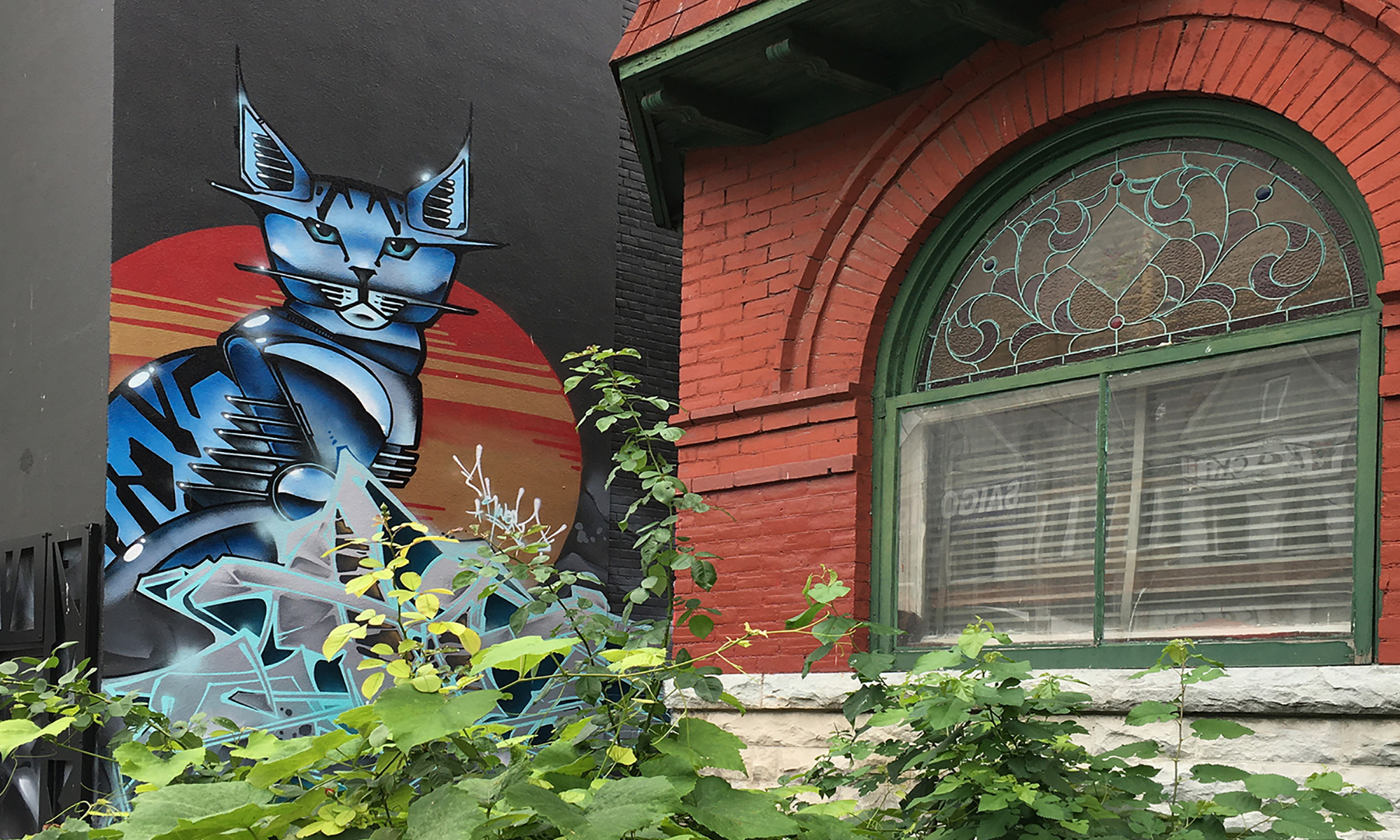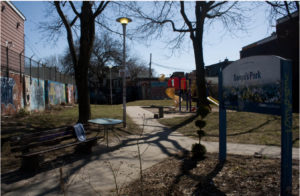By the 1930s, the market had become permanently established along Kensington Avenue and the surrounding neighborhood. Many of the homeowners and merchants had converted the ground floor of their houses to stores and moved most of their wares indoors, but continued to display goods for sale outside in order to attract customers and to compete with street vendors.[i] At this point, the area was known by many as the Jewish Market, but was beginning to be referred to as Kensington Bazaar or Market.[ii] It was open mostly on Thursday and Friday, so the Jewish population could shop and prepare for Sabbath.[iii] The market would open again after sundown on Saturday night with the end of Sabbath, and would remain open until midnight.[iv] While the majority of the people living and working in the market were Jewish, the neighborhood was also home to smaller numbers of Italians, Ukrainians, Hungarians and African Canadians. The movement of stores into the ground-level of homes resulted in high density living in the apartments above the shops. The spaces would house grandparents, parents and children, often accompanied by a renter as well.[v]
Sonya Lunansky was one of the small shop owners the market became defined by. She began her fruit shop on a rented space in front of a storefront on Augusta Avenue in the 1930s. What is now the Augusta Fruit Market began as a few boxes of fruit and a scale.[vi] Her son Sam Lunansky recalled to Jean Cochrane -author of one of the definitive texts on the market, Kensington- his memories of the early days of the shop. They would sell rain or shine, always outside and in the elements, until they could eventually afford to rent indoor shop space.[vii] Small businesses like Sonya’s fruit market are what early Kensington Market was built upon, and what allowed the small, vibrant community to take root there. Sonya lived in the neighborhood for her whole life, was a vibrant member of the community, and raised a family there. There is now a parkette named in her honour, Sonya’s Park, which is meant to provide the neighborhood with more green space, family-oriented activity, leisure, and a community meeting place.
[i]Barbara Myrvold, Historical Walking Tour of Kensington Market and College Street (Toronto: Toronto Public Library Board, 1993), 15.
[ii]“The Standard becomes a Movie House, 1935,” Accessed February 8, 2013, http://www.billgladstone.ca/?p=6818
[iii]Jean Cochrane, Kensington (Erin, Ontario: Boston Mills Press, 2000), 35.
[iv]Ibid, 43.
[v] Ibid, 47.
[vi]Ibid, 39.
[vii]Ibid, 39.

